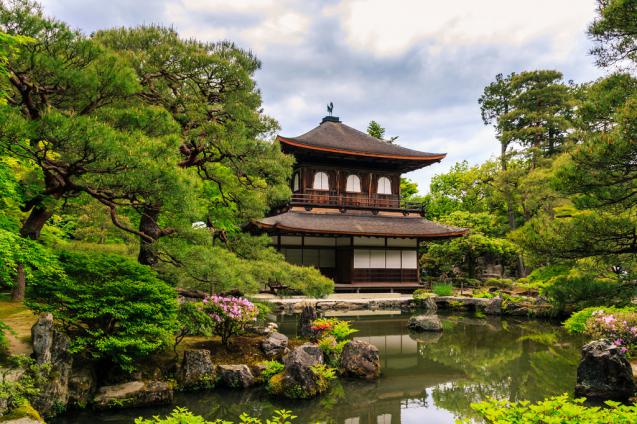
If there is a Golden Pavilion (Kinkaku-ji), the Silver Pavilion also does exist! It is also officially named as Jish-ji or Temple of the Shining Mercy. However, in contrast with the Golden Pavilion which is literally coated with gold leaf, you will not trace any silvery part in the brown exterior of the temple. It is believed that the light reflecting from the moon that makes its dark exterior turn to silver color is the reason for its name.
The villa is located along Higashiyama (Eastern Mountains of Kyoto). It was originally built for the artsy shogun Ashikaga Yoshimasa in 1482. It was designed after Kinkaku-ji (Golden Pavilion), which is his grandfather's retirement villa at the Northern mountains (Kitayama).
After his death, the temple was converted into a Zen Temple on 1490.
It is said to be the development center for the refined Japanese arts and culture such as tea ceremony, flower arrangement (ikebana), noh theater, poetry, garden design, and architecture.
Things to see
Aside from the pond and the humbling architecture, the temple is also known for its first-rate designed dry sand garden called "Sea of Silver Sand".
On the right side of the Main Hall (Hondo) stands Togudo, the only temple beside the Silver Pavilion.
An uphill path through the moss garden will lead the visitors to the nice top view angle of the whole temple grounds.
Ginkakuji can be accessed by direct bus number 5, 17 or 100 from Kyoto Station in about 35-40 minutes and for 230 yen one way. Alight to City Bus Stop Ginkakuji-mae and take a short walk from there to the temple.
The Hondo (main hall) is not available for public viewing.
The temple is open from 8:30 am - 5:00 pm all year round.
Fees:
Parking fee is 1,000 Yen for 2 hours (cars);
Entrance fees: Adults: 500 yen, Junior High and Elementary School Students: 300 yen
Submit Itinerary
Signup
- Sign Up
- Already a member? Login Now!
